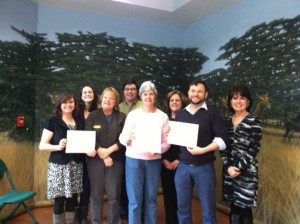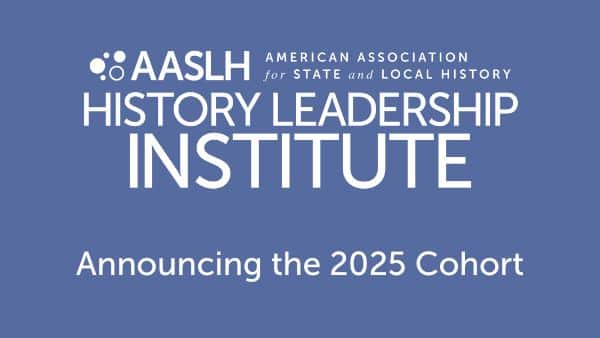Organizations enrolled in StEPs are finding they make much more progress when they work on the program within a group setting.
And the reason for their success isn’t just “misery loves company.” 
In the five years since StEPs opened for enrollment, AASLH has encouraged formation of state-based StEPs groups (and other groups like railroad museums or historic houses in a city) because so many of the organizations that piloted StEPs reported that interaction with other museums and sites and with a service provider greatly enhanced their experience.
Moreover, participation in a StEPs group increased their success in serving their communities and improving policies and practices.
Realizing that other museums and sites share the same challenges and concerns as your organization is not only validating but empowering.
So often, organizations feel isolated because they may be the only museum or small museum in their community.
Joining a StEPs group makes a huge difference because it offers networking, shared learning, and an accountability mechanism that promotes progress.
Here’s information on some of the StEPs groups that have formed:
- StEPs-CT is a two-year program offering professional development, facilitated conversation, and mentorship opportunities. Organizations that complete the program receive exclusive access to competitive grant funds. Sponsored by the Connecticut League of History Organizations and Connecticut Humanities in partnership with the Connecticut Historical Society, the program served twenty-four organizations from 2012-14. Those organizations received over $45,000 in grants and earned a total of 116 Bronze, Silver or Gold certificates (40% of all StEPs certificates awarded nationwide!).
- The King County, Washington-based organization, 4Culture, has created StEPs 4Culture, a program that combines professional development, training, mentorship, peer support and incentive-based funding all structured around StEPs. Fifty organizations in the Seattle area are taking part in convenings, roundtables, mentor opportunities, and other activities in 2014-15.
- In Carmel, Indiana, Hamilton County’s Education Leadership Program for Heritage Organizations (HELP) is using StEPs to improve sustainability of local heritage organizations. The initiative is sponsored and funded by Hamilton County Tourism. The Indiana Historical Society is assisting with the program. Nine heritage organizations are taking part in workshops and consultations over a three-year period.
- In Tennessee, AASLH received funding from the Community Foundation of Middle Tennessee to work with history organizations on StEPs. Five Middle Tennessee museums and sites worked with AASLH Program Manager Bethany Hawkins in 2012-13, focusing primarily on the Stewardship of Collections section. Last month, the Foundation awarded funding for AASLH to begin working with additional organizations in 2015.
- StEPs for Ohio is a new initiative of the Ohio History Connection. The OHC Local History Office is working with AmericCorps workers to offer workshops, webinars, and one-on-one consulting to help local historical societies and museums earn at least the six Bronze StEPs certificates.
So whether it’s “birds of a feather flock together” or “misery loves company,” or more likely a combination of the two, I encourage all StEPs participants to start a discussion in their state about forming a StEPs group. Low-budget or well-funded, a StEPs group can help your organization make meaningful progress. And that can translate into more credibility and more support!
Cherie Cook is Senior Program Manager at AASLH. She can be reached at [email protected] or 573.893.5164.





